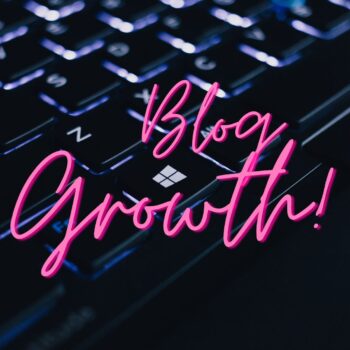Are you looking for ways to make your blog posts more impactful and leave your readers craving for more? In this article, we will uncover 10 effective strategies to end your blog post on a high note and keep your audience coming back for more.
Crafting a compelling conclusion is just as important as writing a strong introduction. It is the final opportunity to leave a lasting impression on your readers and encourage them to take further action. Whether you want to inspire them to engage in the comments section, sign up for your newsletter, or share your post on social media, the way you wrap up your content can make all the difference.
From utilizing persuasive calls-to-action to summarizing your main points in a memorable way, these strategies will help you create an ending that resonates with your audience and compels them to stay connected to your blog. So, let’s dive in and discover how to end your blog posts like a pro!
Implementing these techniques will not only leave your readers wanting more but also improve the overall engagement and success of your blog. So, don’t miss out on the opportunity to create a lasting impact with a well-crafted conclusion.
The importance of a strong conclusion in a blog post
A well-crafted conclusion is the final piece of the puzzle in creating a compelling and impactful blog post. It’s the last chance to leave a lasting impression on your readers and solidify the key messages you’ve conveyed throughout your content. A strong conclusion can inspire your audience to take action, whether that’s engaging with your brand, sharing your post, or returning to read more of your work.
Ending your blog post on a high note is crucial for several reasons. Firstly, it leaves your readers with a sense of closure and satisfaction, ensuring they feel their time was well-spent. A powerful conclusion can reinforce the main takeaways, summarize the key points, and encourage further exploration or reflection. This not only enhances the reader’s experience but also increases the likelihood of them returning to your blog in the future.
Moreover, a strong conclusion can boost engagement and social sharing. When readers are left feeling inspired, motivated, or simply intrigued, they’re more likely to share your content with their networks, leave a comment, or sign up for your email list. This amplifies the reach and impact of your blog, ultimately driving more traffic and building a loyal following. Crafting an engaging conclusion is, therefore, a crucial element in maximizing the effectiveness of your blog posts and achieving your desired outcomes.
Summarizing your main points
One of the most effective ways to end a blog post is by summarizing the key points you’ve covered throughout the content. This not only reinforces the main takeaways for your readers but also helps to solidify their understanding and recollection of the information you’ve provided.
When summarizing your main points, focus on the most important and impactful ideas that you want your audience to remember. Briefly revisit the core themes, insights, or solutions you’ve discussed, and present them in a clear and concise manner. This can be done in a single paragraph or through a bulleted list, depending on the complexity of your topic and the length of your post.
The goal is to provide a concise, yet comprehensive, recap that encapsulates the essence of your blog post. By doing so, you’re ensuring that your readers leave with a clear understanding of the value you’ve delivered and the key messages they should take away. This can be particularly helpful for longer or more in-depth articles, where a summary can help readers retain the most important information.
Using a call-to-action to engage readers
A powerful call-to-action (CTA) is a crucial element of a compelling blog post conclusion. By providing your readers with a clear and compelling next step, you can encourage them to engage further with your content, your brand, or your offerings.
Your CTA can take many forms, depending on your goals and the specific needs of your audience. It could be an invitation to leave a comment, sign up for your email list, download a free resource, or even make a purchase. The key is to ensure that your CTA is highly relevant and valuable to your readers, aligning with their interests and addressing their pain points.
When crafting your CTA, focus on using action-oriented language that creates a sense of urgency and excitement. Use verbs like “subscribe,” “download,” “learn more,” or “join now” to inspire your readers to take immediate action. Additionally, consider offering an incentive or benefit that will compel your audience to respond, such as a exclusive content, a discount, or a chance to win a prize.
By incorporating a strong CTA into your blog post conclusion, you’re not only encouraging further engagement but also demonstrating your commitment to providing value and supporting your readers’ needs. This can lead to increased conversions, a stronger relationship with your audience, and ultimately, the growth and success of your blog.
Asking thought-provoking questions
Ending your blog post with thought-provoking questions can be an effective way to engage your readers and leave them with a lasting impression. By posing questions that encourage reflection, analysis, or further exploration, you can inspire your audience to continue the conversation, share their own perspectives, and deepen their connection with your content.
The questions you ask can be directly related to the main themes of your blog post, challenging your readers to apply the insights you’ve provided or consider alternative viewpoints. Alternatively, you can pose more open-ended questions that encourage your audience to think about the broader implications or real-world applications of the information you’ve shared.
When crafting your questions, aim to strike a balance between being thought-provoking and being easily accessible to your readers. Avoid overly complex or obscure questions that may alienate or confuse your audience. Instead, focus on questions that are engaging, relevant, and encourage your readers to engage in meaningful reflection or discussion.
By ending your blog post with a thought-provoking question, you’re not only leaving your readers with a sense of intrigue and curiosity but also inviting them to continue the conversation. This can lead to increased engagement, valuable feedback, and the opportunity to build stronger relationships with your audience.
Providing additional resources or further reading suggestions
Offering your readers additional resources or further reading suggestions in your blog post conclusion can be a powerful way to enhance their experience and encourage continued engagement with your content. By providing relevant and valuable supplementary information, you’re demonstrating your expertise, showcasing your commitment to their learning, and giving them the opportunity to dive deeper into the topics you’ve covered.
The resources you recommend can take various forms, such as links to related blog posts, external articles, industry reports, or even your own products or services. The key is to ensure that the additional content is highly relevant and adds genuine value to your readers’ understanding or their ability to apply the insights you’ve shared.
When presenting your further reading suggestions, consider organizing them in a clear and visually appealing manner. You could create a bulleted list, a resource section, or even a downloadable content library. Provide a brief description of each item, highlighting the key benefits or takeaways that your readers can expect to gain from exploring it.
By including these types of resources in your blog post conclusion, you’re not only enriching the overall experience for your readers but also positioning yourself as a trusted authority in your niche. This can lead to increased credibility, higher engagement, and the opportunity to convert your readers into loyal subscribers or customers.
Sharing personal anecdotes or stories
Ending your blog post with a personal anecdote or story can be a highly effective way to leave a lasting impression on your readers and create a more emotional connection with your content. By sharing a relatable, authentic, and meaningful personal experience, you can humanize your brand, demonstrate your expertise, and leave your audience with a memorable takeaway.
When choosing a personal story to share, consider how it relates to the main themes or key messages of your blog post. The anecdote should not only be engaging and compelling but also serve to reinforce the insights you’ve provided or inspire your readers to take action. It could be a story about a challenge you’ve overcome, a lesson you’ve learned, or a moment of triumph or inspiration that has shaped your perspective or approach.
By weaving your personal narrative into the conclusion of your blog post, you’re creating a more intimate and authentic connection with your readers. This can help to build trust, foster a sense of community, and make your content more memorable and impactful. Additionally, sharing a personal story can be a powerful way to leave your audience with a lasting emotional resonance, inspiring them to reflect on their own experiences or consider the broader implications of the information you’ve provided.
Ending with a cliffhanger or teaser for future content
Leaving your readers with a tantalizing cliffhanger or a teaser for future content can be an effective way to end your blog post and leave them eagerly anticipating your next piece of content. This strategy can be particularly useful for building suspense, creating a sense of anticipation, and encouraging your audience to stay engaged with your blog over the long term.
When crafting your cliffhanger or teaser, consider how you can pique your readers’ curiosity and leave them with a burning desire to know more. This could involve hinting at a groundbreaking revelation, a game-changing solution, or an exciting new development that you’ll be exploring in an upcoming post. Alternatively, you could tease a behind-the-scenes look at your creative process, a sneak peek at a new product or service, or a exclusive opportunity for your loyal readers.
By ending your blog post with a cliffhanger or teaser, you’re not only leaving your audience wanting more but also positioning yourself as a reliable and consistent content creator. This can help to build anticipation, foster a sense of community, and encourage your readers to stay subscribed to your blog or follow you on social media to ensure they don’t miss out on your next piece of content.
Encouraging readers to leave comments or share their thoughts
Inviting your readers to engage with your blog post by leaving comments or sharing their thoughts can be a powerful way to end your content and foster a sense of community around your brand. By actively encouraging your audience to participate, you’re not only demonstrating your openness to feedback and dialogue but also creating an opportunity to deepen your understanding of their needs, interests, and pain points.
When encouraging reader engagement in your blog post conclusion, consider using a clear and compelling call-to-action, such as “Share your thoughts in the comments below” or “Let me know what you think about this topic.” You can also ask specific questions that prompt your readers to share their own experiences, perspectives, or ideas related to the content you’ve provided.
Additionally, you can offer an incentive or reward for reader engagement, such as a chance to win a prize or the opportunity to be featured in a future blog post. This can help to increase the likelihood of your audience taking the time to share their feedback and further strengthen the connection between your brand and your loyal readers.
By fostering an active and engaged community around your blog, you’re not only enhancing the overall experience for your readers but also gaining valuable insights that can inform the development of future content and the growth of your brand. This can lead to increased loyalty, higher engagement, and a more dedicated following that will continue to support and champion your work.
Using visuals to make your conclusion more impactful
Incorporating visuals into the conclusion of your blog post can be a highly effective way to make your final message more impactful and memorable for your readers. Whether it’s a striking image, an infographic, or a well-designed call-to-action button, visual elements can help to reinforce your key points, add visual interest, and leave a lasting impression on your audience.
When selecting visuals to include in your blog post conclusion, consider how they can complement and enhance the written content. For example, you could use an infographic to summarize the main takeaways in a concise and visually appealing way, or a high-quality image to evoke a specific emotion or reinforce a key message.
Additionally, you can use visuals to draw attention to your call-to-action, making it more engaging and compelling for your readers. This could involve creating a custom graphic or button that aligns with your brand’s aesthetic and encourages your audience to take the desired action, whether that’s signing up for your newsletter, downloading a resource, or sharing your content on social media.
By incorporating visuals into your blog post conclusion, you’re not only making your content more visually appealing and engaging but also increasing the likelihood of your readers retaining the key information and taking the desired action. This can lead to higher engagement, better conversion rates, and a more loyal and engaged audience for your blog.
Experimenting with different conclusion styles and finding what works best for your audience
When it comes to crafting the perfect conclusion for your blog post, there’s no one-size-fits-all approach. The most effective strategy will depend on the specific needs and preferences of your audience, as well as the goals and objectives you have for your content.
As you continue to develop and refine your blog post conclusions, it’s important to experiment with different styles and formats to see what resonates best with your readers. This could involve testing various call-to-action approaches, experimenting with the use of visuals, or incorporating a mix of techniques, such as summarizing key points and asking thought-provoking questions.
By closely monitoring the performance and engagement metrics of your blog posts, you can gain valuable insights into which conclusion styles are most effective in driving the desired outcomes, whether that’s increased comments, social shares, or conversions. Use this data to inform your future content planning and continue to refine your approach, always keeping your audience’s needs and preferences at the forefront of your mind.
Ultimately, the goal is to find a conclusion formula that not only resonates with your readers but also aligns with your brand’s unique voice and the overall goals of your blog. By consistently experimenting and iterating, you can develop a winning formula that leaves your audience feeling inspired, engaged, and eager to continue their journey with your brand.









No Comments
Leave a comment Cancel